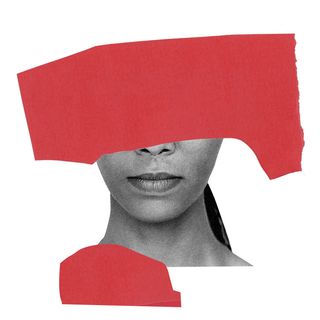
Menstruating Students Shouldn’t Have to Miss Education Because Schools Lack Pads: Karnataka HC
“Such a measure would ensure full attendance of adolescent girls in schools and their right to education would be fulfilled.”

The Karnataka High Court has directed the state government to make menstrual hygiene products available to adolescent girls in the state so that the lack of pads doesn’t become a roadblock to their right to education.
The judgment was prompted by a petition filed before the court by the Anti-Corruption Council of India, an NGO, which sought strict implementation of the government’s ‘Shuchi Yojana.’ The government scheme was introduced eight years ago and involved making sanitary pads accessible to menstruating students in schools — a measure undertaken to curb low attendance of girls and protect their right to education. However, the poor implementation of the scheme can have major consequences for its 17,06,933 beneficiaries — adolescent girls who run the risk of being excluded from formal education.
Shuchi Yojana was introduced by the central government in 2013 but has been run by state governments since 2015. It is primarily targeted at adolescents in the age group of 10-19 years in rural areas and is aimed at making sanitary napkins affordable and accessible — by selling them for as little as Rs. 6 for a pack of six pads. In addition to distributing pads, the scheme also requires schools to have separate toilets for female students, as well as access to soaps and flowing water in them.
But in Karnataka, the implementation of the scheme is replete with logistical issues. According to a 2018 survey by Child Rights Trust, 90% of the schools surveyed didn’t have soaps in toilets, 70% didn’t have access to water and hand-wash facilities — forcing students to carry buckets of water to toilets. The bench also referred to a 2019 survey conducted by the Karnataka State Legal Services Authority and the National Law School of India University, which found that only 63% of schools in the state had separate toilets for female students — out of which 18% were defunct. The lack of access to individual toilets for students also acts as a deterrent to attending school on menstruating days.
The two-judge bench of Justices B.V. Nagarathna and J.M. Khazi urged the state government to make menstrual hygiene products available in schools, and noted that “Such a measure would ensure full attendance of adolescent girls in schools and their right to education would be fulfilled.”
Related on The Swaddle:
Survey: Indian Women Unable To Access Menstrual Hygiene Products Under Covid19 Lockdown
“If you want to empower young women and young girls, provide these facilities,” the bench also noted during an earlier hearing of the same matter — adding that the provision of sanitary napkins, as well as construction of separate toilets for men and women, will “not only [lead to] empowerment of the girl child, but also implementation of the fundamental right under Article 21A [Right to Education].”
Following the two judgments, the state government has assured the court that will make pads available to menstruating students on school campuses. At present, the government is waiting for the requisite administrative approvals to implement the scheme, and has promised to procure around 2.04 crore sanitary napkins for distribution — within 90 days. The court has also received further assurance from the government’s counsel that “in the event, schools are closed, there would be community-based door-to-door distribution through health workers.”
Adolescent girls’ access to menstrual hygiene products is linked to their education curve. A 2018 report by The Hindu found 60% of adolescent girls in India missed school on periods: prevailing anxiety about leakage or staining their uniforms were among the major reasons since most of the girls used some form of homemade pads due to affordability concerns. In India, on average, menstruating students miss six days’ worth of classes each month due to a lack of proper menstrual hygiene management facilities, and 23 million girls drop out of school annually when they start menstruating.
According to a survey from 2010, only 12% of India’s menstruating population have access to menstrual hygiene products, but the remaining 88% are largely dependent on unsafe materials like fabric bags, rags, old newspapers, ash, or even sawdust. Over the years, India has attempted to address this by making menstrual hygiene products tax-free, and by providing women with sanitary napkins costing INR 2.5 per pad across 3,600 Janaushadhi Kendras, local outfits, in the country, but most women continue to be unaware of the scheme.
While the court lauded the government for creating a scheme to alleviate period poverty and make menstrual hygiene accessible, it also pointed out that the mere existence of the scheme won’t help. “…it is necessary to emphasize that it should be implemented in its true letter and spirit,” the court concluded.
Devrupa Rakshit is an Associate Editor at The Swaddle. She is a lawyer by education, a poet by accident, a painter by shaukh, and autistic by birth. You can find her on Instagram @devruparakshit.
Related


SC Tells Govt to Reconsider Vaccine Prices As Marginalized Groups “May Not Have Ability To Pay”
